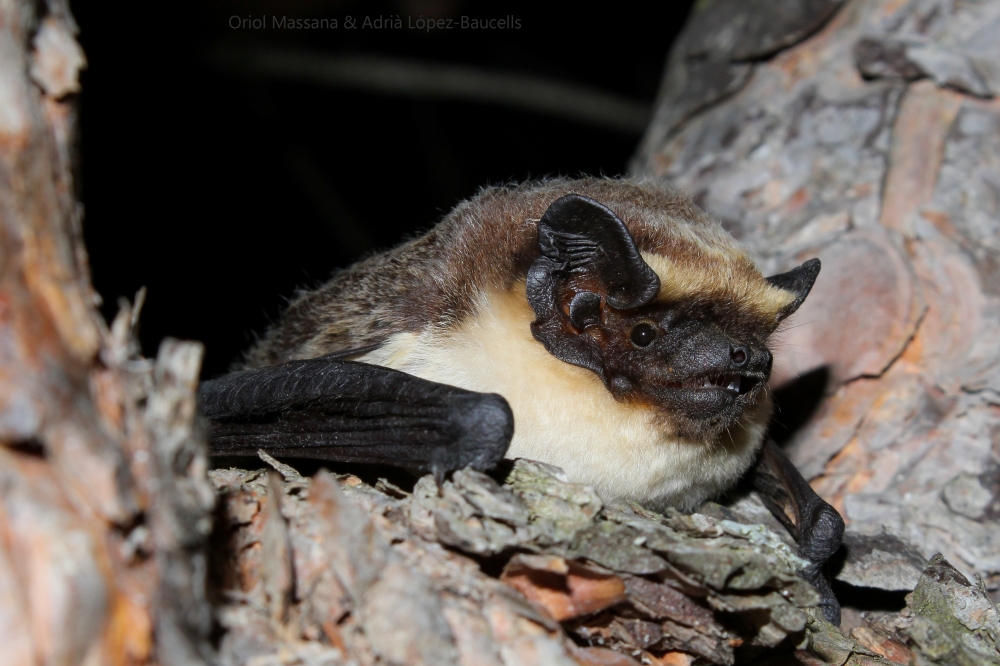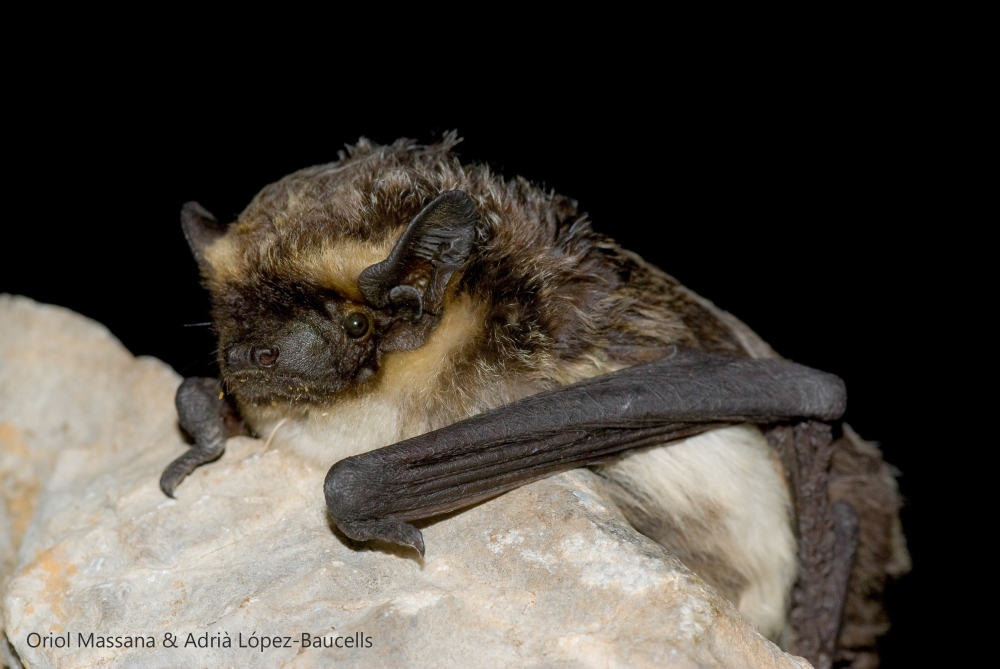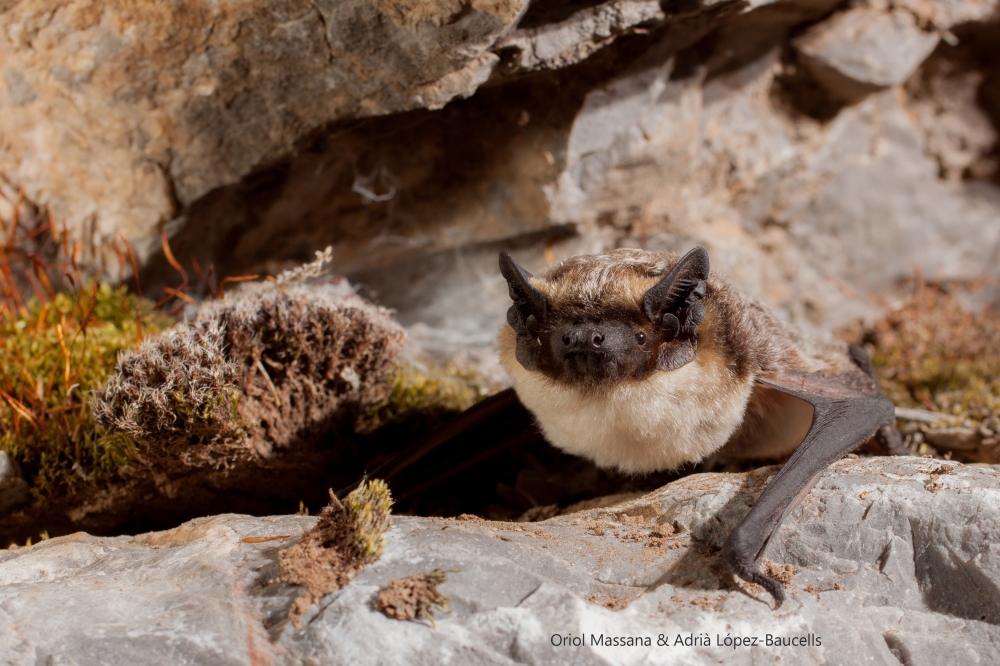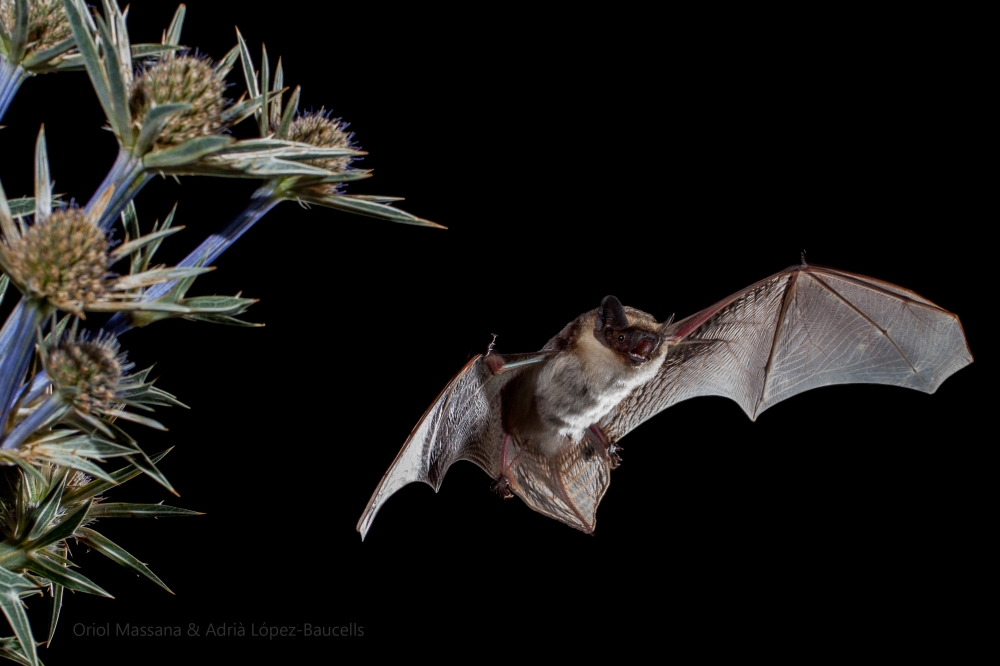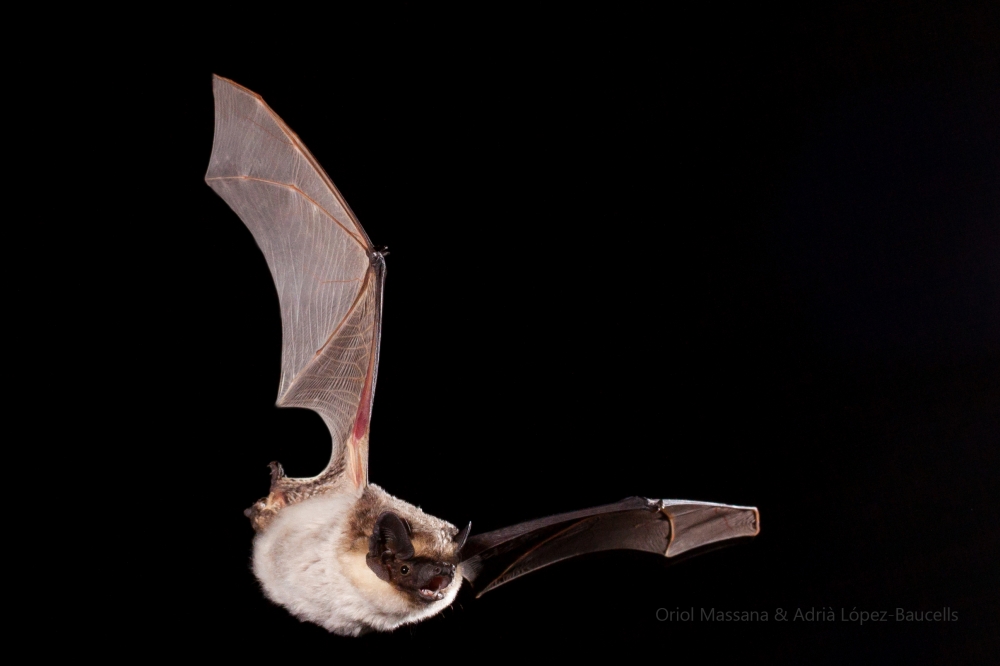Parti-coloured bat
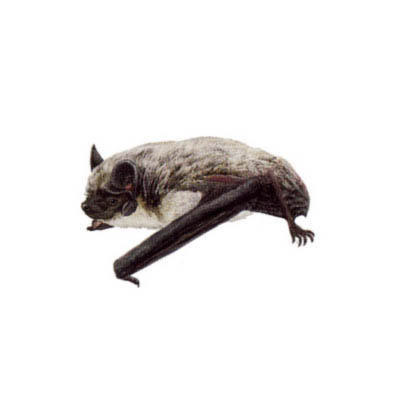
Vespertilio murinus (Linnaeus, 1758)
Vespertilionidae
Least Concern
| Other names | |
|---|---|
| Catalan | Ratpenat argentat |
| Spanish | Murciélago bicolor |
| English | Parti-coloured bat |
| French | Sérotine bicolore |
| Basque | Saguzar kolore biko |
| Galician | Morcego de dúas cores |
Description
Medium to large-sized bat, with a body length ranging from 48 to 64 mm, a forearm length of 40 to 50 mm, a wingspan of 270 to 310 mm, a tail length between 37 and 44 mm, ears measuring 14 to 15 mm, and a weight ranging from 10 to 24 g. The dorsal fur is long and darker than the ventral fur, being dark brown with flattened tips. The ventral fur is distinctly lighter than the dorsal fur. The skin is dark, although it can be yellowish around the ears. The ears are large and have a thick fold at the base that connects to the mouth corner.
It is nearly impossible to confuse due to its size and coloration. The serotine bat (Eptesicus serotinus) is larger and more brownish, the northern serotine (Eptesicus nilsonii) is more golden, and the Savi's pipistrelle (Hypsugo savii) is smaller.
Fotografies
Distribution
The species is distributed throughout central and northern Europe, from central France, the Alpine region, and the Balkan Peninsula. The distribution is limited to the north in the Netherlands, Denmark, southern Scandinavia, Russia, and Siberia. To the east, it is found across the entire Caucasus, Iran, Mongolia, northeastern China, Korea, Afghanistan, and northern Pakistan. The distribution in central Europe is complex due to the mobility of the species and the segregation between sexes. Summer sightings of this species in southern Europe consist exclusively of males.
Roosts and phenology
Breeding colonies and individual animals are usually found in crevices, anthropic structures like lofts, barns, mountain refuges, and rock crevices. Some sightings of cavities in trees and bat boxes come from the eastern part of their distribution. Breeding colonies are occupied from May to August and typically consist of 20 to 60 females, although some can reach up to 200. In summer, males form groups of up to 300 individuals, usually away from breeding colonies, and they tend to use a network of up to 7 different shelters. Pups are born from late May, and they are often twins (sometimes even three).
Many females mate in their first autumn. Mating occurs in late autumn (October and November) when males display mating behaviors with clearly audible calls, usually in old buildings like cathedrals, towers, castles, as well as cliffs and wooded areas. While in some areas of Europe, such as Denmark, the bats are essentially sedentary, the vast majority of populations are migratory. Migration records include flights of 1,440 km from Estonia to Austria and 1,787 km from Russia to France. They spend hibernation in buildings like churches, ruins, and also in rock crevices.
Habitat and diet
It feeds near water, in open agricultural areas, meadows, and river zones, as well as near human settlements. In Switzerland, radio-tagged animals seem to indicate that females prefer water bodies and human environments, while males hunt more in agricultural and forested areas. In southern Europe, almost all sightings correspond to mountainous areas, and individuals have been captured up to 3,400 meters above sea level.
Its diet consists mainly of dipterans and aphids, as well as moths to a lesser extent. It tends to exploit large concentrations of insects that gather over water bodies. Prey is hunted in flight, with fast and straight flights, at around 10 to 40 meters above ground. They usually patrol over water bodies, open habitats, and, more rarely, over forests.
Echolocation
Echolocation consists of long quasi-constant frequency (QCF) calls, up to 25 ms in duration, with a frequency of maximum energy between 22 and 29 kHz. During the fall, they emit distinctive and clearly audible mating calls. Based on the type of call, this species falls within the phonic group Eptesicus/Nyctalus/Vespertilio.
Status
According to the IUCN Red List, it is classified as Least Concern, with a stable population trend. This species is protected by national laws in many countries and is included in the Eurobats Agreement, the Bern Convention, and the EU Habitat and Species Directive. Its distribution in Europe is highly fragmented. In Western and Southern Europe, known breeding colonies are poorly connected and may require special attention. The main threats include the restoration of buildings with colonies and, during the migration season, collisions with wind turbines and roads.
